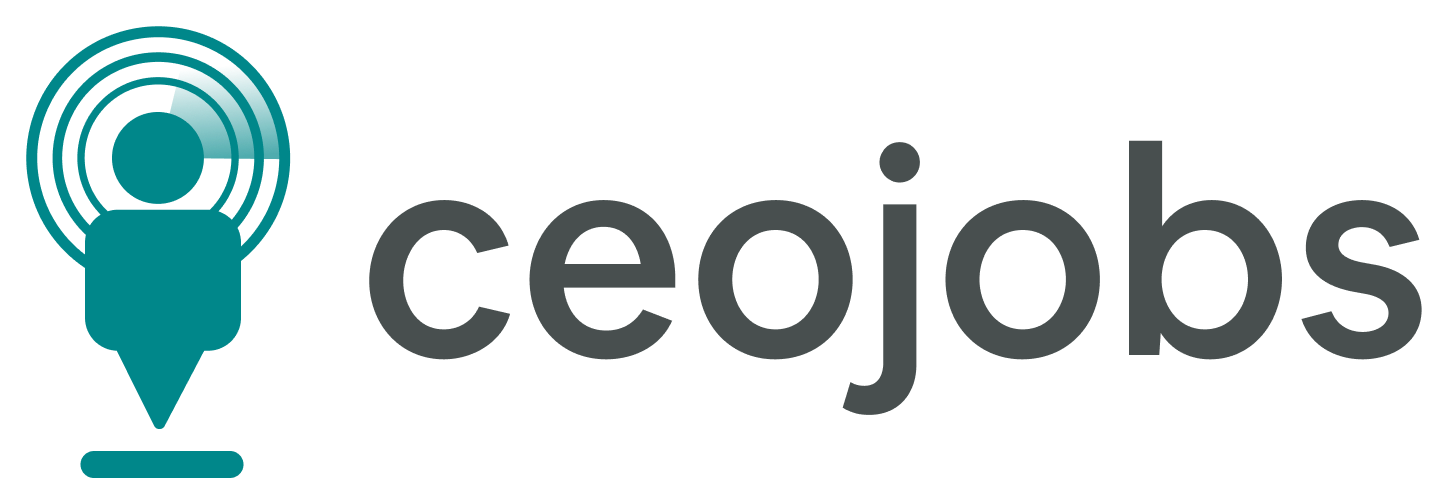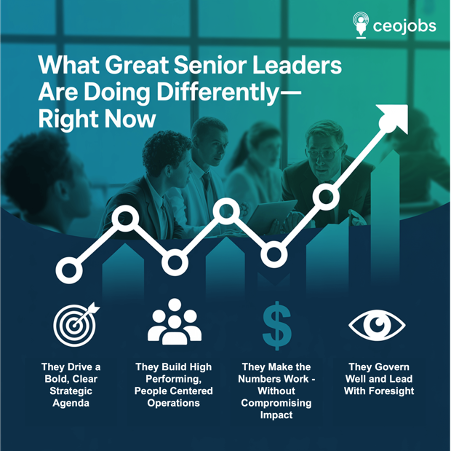𝗪𝗵𝘆 𝗧𝗿𝗮𝗱𝗶𝘁𝗶𝗼𝗻𝗮𝗹 𝗟𝗲𝗮𝗱𝗲𝗿𝘀𝗵𝗶𝗽 𝗛𝗶𝗿𝗶𝗻𝗴 𝗠𝗲𝘁𝗵𝗼𝗱𝘀 𝗙𝗮𝗶𝗹 𝗖𝗘𝗢𝘀 𝗮𝗻𝗱 𝗕𝗼𝗮𝗿𝗱𝘀
Popular Post
Tags

𝗪𝗵𝘆 𝗧𝗿𝗮𝗱𝗶𝘁𝗶𝗼𝗻𝗮𝗹 𝗟𝗲𝗮𝗱𝗲𝗿𝘀𝗵𝗶𝗽 𝗛𝗶𝗿𝗶𝗻𝗴 𝗠𝗲𝘁𝗵𝗼𝗱𝘀 𝗙𝗮𝗶𝗹 𝗖𝗘𝗢𝘀 𝗮𝗻𝗱 𝗕𝗼𝗮𝗿𝗱𝘀
The High-Stakes Leadership Hiring Dilemma
Time. Money. Capability.
When it comes to recruiting a Senior Business Leader (SBL)—NEDs, CEOs, COOs, Presidents, Vice Presidents, Managing Directors, General Managers, and Country Managers—the responsibility ultimately falls on the CEO or Board. Yet, despite their vast expertise in finance, strategy, operations, or marketing, these leaders are rarely experienced in executive recruitment.
That makes them vulnerable.
Without the right expertise, organisations often turn to external recruiters whose priorities don’t always align with theirs. Budget constraints may push them toward LinkedIn job postings or generic hiring platforms. Even a well-established HR department, while skilled in talent acquisition, may lack the business-wide insight or network required to secure the right leadership hire.
The result?
Rushed decisions, misaligned hires, and ultimately, costly failures.
Over the coming weeks, we will explore the complexities behind recruiting SBLs, how traditional hiring practices often fall short, and what organisations can do to secure leadership that truly drives business success. Today, we start with the most common pitfalls:
1. The Copy/Paste Job Description Trap
A job description is the foundation of a successful hire. Yet, many organisations resort to copying and pasting outdated descriptions—or worse, using AI-generated, context-free templates.
This is a recipe for failure.
Senior leadership roles vary dramatically based on the organisation's size, strategy, and market position. A CEO leading a startup will need vastly different skills than one managing a company in a divestment phase. If leadership teams don’t engage in deep, strategic discussions about what their organisation truly needs, they’re already on the path to a failed hire.
A better approach: ✔️ Prioritise detailed, role-specific job analysis. ✔️ Engage experienced SBLs in defining the competencies required. ✔️ Avoid generic descriptions—context is everything.
2. The Narrow Candidate Pool Problem
Many businesses limit their search to traditional talent pipelines—active job seekers, established executive networks, or industry-specific candidates.
The problem? The best leaders aren’t always actively searching.
Top-tier executives are often open to the right opportunity but disengaged from standard job postings and recruiter outreach. Traditional headhunting methods result in a shallow talent pool, while the most qualified candidates remain undiscovered.
A better approach: ✔️ Proactively engage with passive candidates. ✔️ Expand the search beyond industry silos. ✔️ Leverage market intelligence to uncover hidden talent.
3. Traditional Hiring Methods Are Too Broad
Paradoxically, while some organisations struggle with a narrow talent pool, others cast their nets too widely—leading to inefficient and ineffective searches.
Traditional hiring methods often focus on:
❌ Keyword-driven screening – Generic filters eliminate unconventional yet highly capable leaders. ❌ Generalist executive search firms – Many lack the specialisation required for complex leadership roles. ❌ Inexperienced interviewers – If they haven’t been an SBL themselves, they may misjudge candidates’ capabilities. ❌ CV-driven assessments – A polished resume does not equate to leadership effectiveness.
A better approach: Companies need precision-based executive search models that balance depth and reach—targeting the right leaders rather than relying on outdated, scattergun hiring techniques.
4. The Future of Senior Executive Search: A Smarter Approach
To attract transformational leaders, organisations must break free from rigid, outdated recruitment models and embrace dynamic, professional, and highly focused strategies.
What works instead? ✔️ Job analysis led by experienced SBLs – No more superficial discussions or generic JDs. ✔️ A deeper understanding of leadership potential – Beyond industry experience, assessing adaptability, cultural fit, and mindset. ✔️ Psychometric & leadership evaluations – Measuring emotional intelligence, resilience, and change leadership. ✔️ Real-world assessments – Simulated leadership challenges reveal true capability beyond interviews.
By understanding the importance of hiring SBL professionals with the right experience and contextual understanding, your business can thrive in today's complex environment.
Final Thoughts
The way organisations recruit senior business leaders must evolve.
Traditional hiring models are either too restrictive—missing out on transformational talent—or too broad, leading to wasted time, effort, and resources.
To secure high-impact leadership, companies must adopt a modern, data-driven, and human-centric approach—one that combines market intelligence, psychometric insights, and strategic talent sourcing. But it all starts with a clear, contextual understanding of what the organisation truly needs from its next leader.
Are You Struggling to Find the Right Senior Leader?
Have past hiring experiences left you frustrated? Are you unsure how to attract and assess top-tier executive talent?
At CEOJobs, our proprietary SBL Sourcing Model & Framework ensures a tailored, strategic approach:
🔹 In-depth Job Analysis – We go beyond basic descriptions to align expectations and reality. 🔹 Strategic Networking & Targeted Headhunting – We engage the right leaders, not just available ones. 🔹 Data-Driven Talent Mapping – We leverage real market intelligence, not just resumes. 🔹 Leadership Evaluations – We assess beyond job titles, focusing on real-world effectiveness. 🔹 Candidate Engagement & Selection – We guide candidates through the process to ensure the best fit.
Leadership hiring is too important to leave to chance. If you want to learn more about how we help organisations secure transformational leadership, let’s start a conversation.
📩 Get in touch with us to explore how we can support your executive hiring needs.
Frequently Asked Questions
-
Q: 1. Why do traditional leadership hiring methods often fail?
A: Traditional hiring methods rely on outdated job descriptions, narrow candidate searches, and generic recruitment processes that fail to identify the right leadership fit. They often overlook passive candidates, rely too much on resumes, and don’t assess real leadership potential effectively.
-
Q: 2. What are the risks of using a generic job description for a senior leadership role?
A: A poorly defined job description leads to misaligned hires. Senior leadership roles vary depending on company size, growth stage, and industry demands. A copy-paste approach can attract candidates with the wrong skill set and derail long-term business objectives.
-
Q: 3. Why is it a mistake to rely only on active job seekers for senior leadership roles?
A: The best leaders are often not actively job hunting. They are engaged in their current roles but open to strategic opportunities. Relying solely on active job seekers limits access to top-tier talent, making it harder to find the best candidate.
-
Q: 4. How do companies unknowingly eliminate strong leadership candidates?
A: Companies often use overly rigid screening criteria, keyword-driven ATS systems, and industry-specific biases that filter out unconventional but highly capable leaders. This results in a talent pool that is too narrow or filled with the wrong candidates.
-
Q: 5. What’s wrong with relying solely on executive search firms?
A: Many generalist search firms lack deep industry knowledge or a targeted approach for senior executive hiring. They may focus on quick placements rather than long-term fit, leading to costly mis-hires. Specialised, strategic headhunting delivers better results
-
Q: 6. What are better ways to assess senior leadership candidates beyond CVs and interviews?
A: Effective assessments include real-world leadership simulations, psychometric evaluations, and in-depth analysis of adaptability, cultural fit, and strategic thinking. These methods provide a clearer picture of how a candidate will perform in the role.
-
Q: 7. Why is leadership hiring too broad in some companies and too narrow in others?
A: Some companies cast too wide a net, resulting in an overwhelming and ineffective hiring process. Others rely too much on traditional networks, limiting diversity and fresh perspectives. A balanced, precision-based executive search approach is needed.
-
Q: 8. How can organisations attract transformational leaders?
A: They need to move beyond standard hiring practices and focus on strategic networking, leadership evaluations, and targeted headhunting. Clear job analysis, market intelligence, and proactive engagement with passive candidates are key.
-
Q: 9. Why do traditional hiring processes fail to predict leadership effectiveness?
A: Traditional methods focus on past experience and industry background rather than evaluating leadership potential, adaptability, and real-world problem-solving. Effective hiring models assess candidates on their ability to drive change and deliver impact.
-
Q: 10. What’s the first step for CEOs and Boards to improve their leadership hiring strategy?
A: Start with an in-depth job analysis that aligns business needs with leadership capabilities. Avoid generic hiring platforms and partner with a specialised search firm that leverages data-driven insights, strategic networking, and real-world assessments.
Post a Comment
Get New Job Notifications
Subscribe & get all related jobs notifications



.png)

Comments (0)